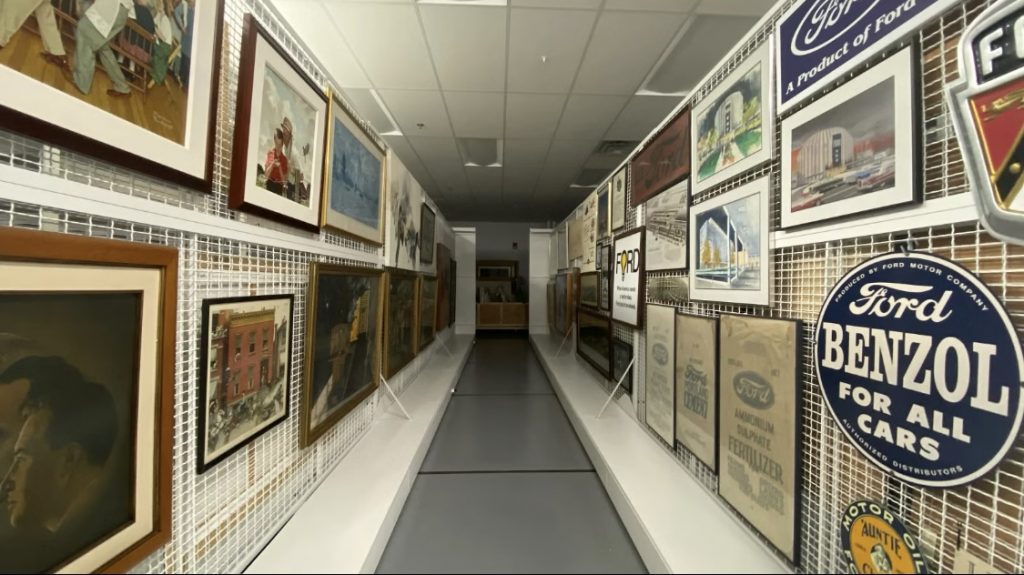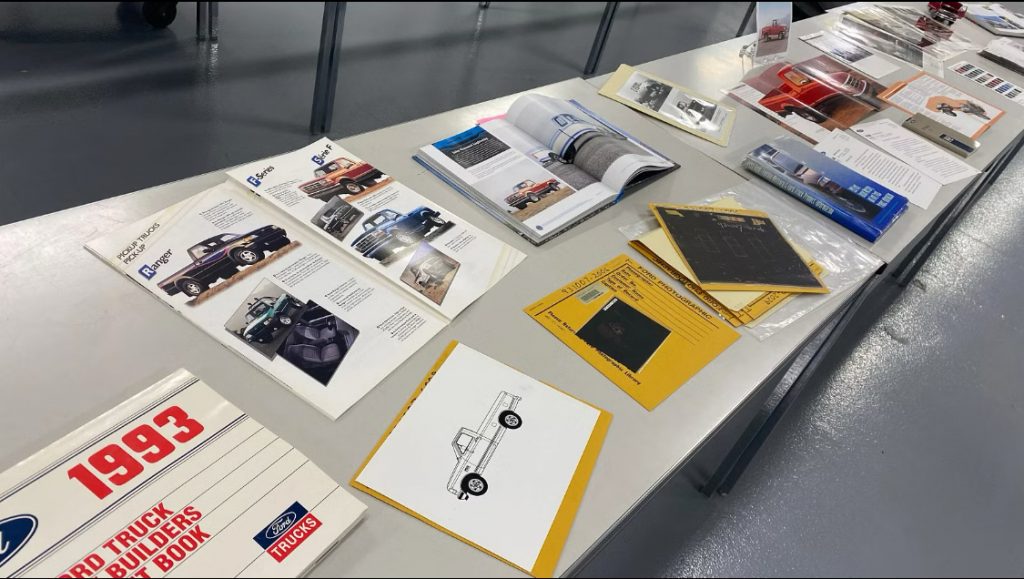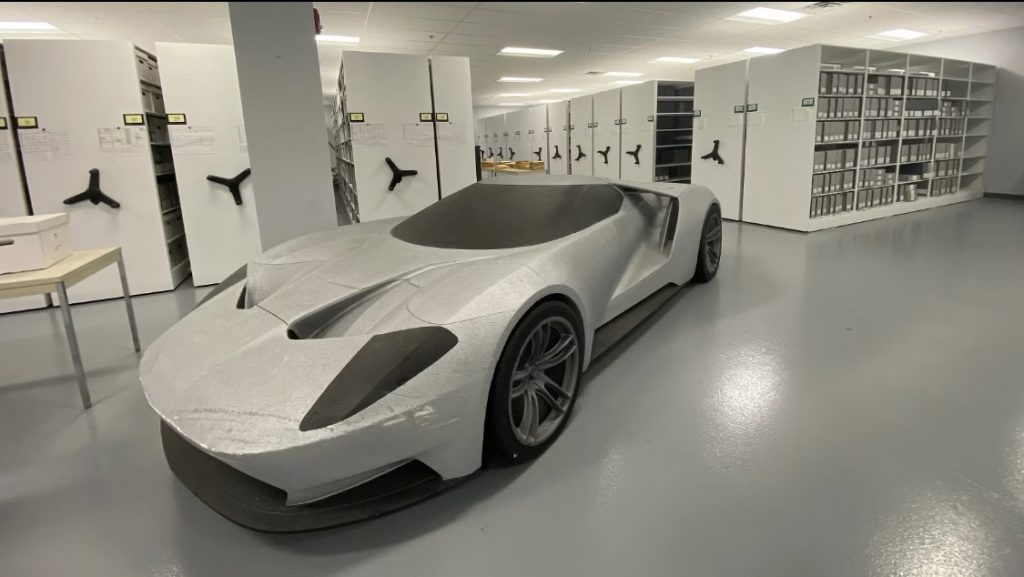by Peter Robinson – – –
The battle over Ford Australia’s precious archive, raging since 2015, finally seems to have settled. There’s still one major step before all parties are happy, but, crucially, the vast majority of the archive stays in Australia.
For a time it seemed possible (even probable) that the entire collection would be shipped to Dearborn and Ford’s then-new archive. FoMoCo, pursuing a policy of centralising the archive with those from Germany and England, believed that it could digitise most of the local material to be available online to researchers, film-makers, academics, economists, enthusiasts and journalists. But, with the physical archive in danger of being removed from Australia, several former Ford Australia executives sought Federal Government action to stop the move.
The group — led by former product planner Peter Fry, with support from ex-chief engineer David Ford and ex-director and vice president of design and engineering Ian Vaughan — argued that the material was of immense historic and national value and should remain in Australia.
Ford’s archive includes minutes of board meetings; engineering and styling Black Books detailing individual local model development; Ford Australia’s first managing director Hubert French’s letters and communications; wartime correspondence; Ford publications (Ford News), employee records and repair manuals for local models; a near-complete selection of local press kits; and hundreds of hours of celluloid film and video footage.
The issue was whether remote, digital-only access to the Ford Australia material would substitute for local access to the original documents. Anyone who’s done research knows it involves delving into an archive. Nothing beats the productivity of in-person ‘browsing’, something that would be virtually impossible for local researchers if the archive was removed from Australia.
A little background: The chief architect of Ford’s Australian archive was the company’s late PR-man Adrian Ryan. Ryan, noticing various books, advertising agency material, Glasses Guides, production records, sales data, “Black Books” (Product Planning guides to new programs and products), Vfacts reports, sales reports, brochures and press material scattered around the company, started to consolidate the items into a central location.
Other material was added: photographs of the styling development of new models, old reports from engineering, dealer and employee newsletters and magazines. Some items dated back to the 1920s. Ian Vaughan believed there are wonderful stories to be told from Product Letters: Falcon Convertible, four-cylinder Falcon, LHD Falcon, 4WD Falcon, Cortina Convertible, RHD Mustang, Imported Galaxie, RHD Fiera, Philippines Bus derived from Truck chassis ordered by Henry II (due to friendship with Imelda Marcos) and more.
The advent of the sadly short-lived (it closed in 2012) Ford Discovery Centre in Geelong provided the opportunity to consolidate the archives in one place.
However, due to the inaccessibility of the Archives at the Discovery Centre, around 2007 it was decided to relocate them back to Melbourne, where they were stored beside the canteen in the Broadmeadows plant. This was a disaster when a fire turned on the sprinkler system and the archives suffered extensive damage. In 2008, Michele Cook joined Adrian on a voluntary basis to assist with research and cataloguing the Archives. In mid-2009 Michele officially took over from Adrian who, sadly, had died of cancer.
Finally, the archives found a home in the basement of the old Head Office (now Ford’s R&D centre) where Cook looked after them for about a decade.

Following the public opening of the new Dearborn archive in 2022, known as the Ford Heritage Vault, there was a newfound interest in the company’s history that benefitted Ford Australia. A year ago, Ted Ryan (no relation), the company’s head archivist, and senior collections archivist Ciera Casteel, were asked to visit Australia. Ryan, a professional archivist (he’s a Fellow of the Society of American Archivists), spent 21 years with Coca-Cola working on its collection – among other items 21,000 Coke TV advertisements – before he was headhunted by Ford in 2018.
Ryan says Ford’s library was a good accumulation, but claims the company was not good at getting stories into the public or in further establishing and managing Ford’s brand heritage. After completing the digital process of the archive Ryan says the Vault now contains more than 20,000 digital items, including brochures, regional issues of the Ford Times magazine, product and concept photography, images of global Ford facilities, and press releases, all of which can be searched digitally at: https://fordheritagevault.com/.
Situated in Dearborn, near the Henry Ford Museum, the new archive is a converted engine laboratory next to Greenfield Village and adjacent the company’s test track. It’s climate-controlled and measures just under 3000sq.metres in floor area, of which 10percent is chilled to four degrees C for the safekeeping of photographic and video material.


Ford’s Dearborn vault (with clay GT)

Ryan and Casteel, working in secret with local vendors – DatacomIT – digitised thousands of images, brochures, documents, and audio-visual materials to preserve and make this history available to the public.
“It has been a mammoth undertaking, and we’re continuing to add to the online archive with Australian-relevant documents, brochures and images,” Ryan said. “We want to ensure the collection is made accessible online for the general public, so everyone can re-live their favourite moments.
“We spent two weeks in Melbourne, redoing the collection to archivist standards before it could be digitised.”
Ryan, whom I spoke to when he (and Casteel) returned to Melbourne for the centenary celebrations, points out that there are issues in how the digitised material is used.
“You, as a journalist, are able to post and note things that a company like Ford never could. We cannot post a TV ad from the ‘60s because those rights expired and everyone involved with the ad would need to be contacted and paid to air it again. Same with print ads. That is why we limit the material in the vault so strictly.
“The issue is not in the digitization, but rather the talent rights behind who took the photos and who/what appears in them. For the Vault, we have a very specific disclaimer noting that it is for educational and editorial use. Even with that disclaimer, we strive to only put in material that is considered rights free. So we can add beauty shots of cars and the printed, copyrighted brochures but could not add racing photos that would have third party marks (Coke would come after me if I added that Alan Moffet car with the Coke logo) or advertising”.
Matt Moraan, Ford Australia’s communications boss, says only, “We are working through what are the best ways to appropriately resource the local archive – while also focusing on the ongoing digitization of assets to ensure they’re widely available to the public through the Ford Heritage Vault, where there are now more than 2,500 brochures and images of Ford models sold in Australia from 1925.”
But, and it’s a big but, Ford Australia has yet to appoint a local archivist to run the collection and ensure it is constantly being updated and available to researchers.

